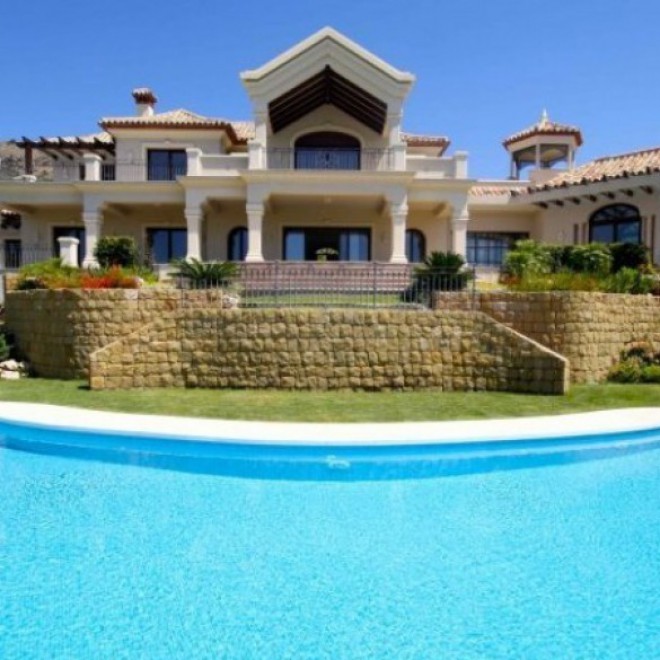Spain Real Estate Is Heading Back To Where It All Began.

British Airways flights to Madrid are packed with London-based real estate executives. The hedge fund Baupost is buying shopping centers, Goldman Sachs and Blackstone are buying apartments in Madrid, and Paulson & Company and George Soros’s fund are anchor investors in a publicly listed Spanish real estate investment vehicle. Kohlberg Kravis Roberts just bought a stake in a Spanish amusement park complex. Big-name private equity firms and banks are teaming up with and competing against one another on huge loan portfolios with names like Project Hercules and Project Octopus.
“It’s surreal,” said Dilip Khullar, a 25-year veteran of Spanish real estate investing and director of Cadena, an investment fund. “One day it’s the worst place in the world to buy real estate and the next, it’s the best.”
Low interest rates, set by the European Central Bank to help buoy Germany’s market, helped to fuel Spain’s housing boom. Real estate developers teamed up with local savings banks to borrow and build over and over again. “We were a train going 200 kilometers an hour and it was hard to stop,” said Jaime Pascual-Sanchiz de la Serna, executive director at Aguirre Newman, a leading real estate consulting firm. Construction reached a staggering 12 percent of gross domestic product, more than double the proportion in Britain or France.
When the bubble burst in 2008, Spain became toxic. “Nobody wanted to invest a penny in real estate,” said Mr. Pascual-Sanchiz de la Serna. “Spain was overbuilt and it was going to take 10 years to work through.” It hasn’t taken that long.
The real estate market started to revive in 2013. Government reforms, including a relaxation of labor laws and stricter rules for banks related to accounting for bad real estate, meant that banks could no longer ignore the assets on their balance sheets. Once the banks had to hold more capital — in some cases drastically more — they started to think it was better to sell, analysts and bankers said.
Spain’s “bad bank,” called Sareb, formed in 2012 with the real estate assets of the country’s bailed-out banks, started to close deals. Separately, last July, Blackstone bought 1,860 apartments for 125.5 million euros, then about $166 million, and in August, Goldman bought a block of public housing in central Madrid. This combination of deals set a floor price, analysts said.
The recovery is still nascent. About €5 billion worth of real estate transactions took place last year, according to the consulting firmCBRE Spain — more than double the amount of the previous year but still small compared with the €166 billion in commercial real estate deals made in Europe last year. At the peak, Spain issued 120,000 mortgages a quarter; in the fourth quarter of 2013, the figure was 15,000. Fitch Ratings recently issued a report saying that real estate prices would continue to fall through 2014, not rebounding until 2015.
And Spain’s economy continues to struggle. The unemployment rate is 26 percent, and growth is estimated to be about 1 percent this year. The government contends things are better, said Pedro Gonzalez, a former shopkeeper who now drives a taxi, but the people haven’t seen it. “There are no jobs,” he added.
But that looks like an opportunity to investors who believe the market will truly take off and want to get in before it does.
“It’s crazy the number of investors coming in,” said Fernando Acuña, co-founder of Aura, a start-up real estate advisory firm in Spain, as he toggled between multiple screens dissecting data in the residential real estate market and showing the uptick inGoogle searches for “comprar piso” — “buy an apartment” — in his bustling office on Madrid’s fashionable Almirante Street.
Small firms like Mr. Acuña’s, midsize investment banks in Spain and global banks in London are buzzing with investors looking for different ways to play the real estate market, by buying apartments or office buildings, scooping up loans from Sareb or the banks themselves, creating pools of capital to buy real estate assets or buying servicing platforms, which give the private equity firms that own them the ability to manage their assets as well as critical market intelligence.
Belén Romana, chairwoman of Sareb, said the number of investors — around 50 — who turned up for the first auctions surprised her. They were aggressive, she said. “It was early and they thought they could make a killing.” They pushed her to move fast and do deals. “They wanted to sit in a dark room and do a bilateral deal,” she said. She refused. Auction processes were put in place, with data rooms for deal teams and deadlines for nonbinding and binding deals.
In 2013, Sareb sold €1.5 billion of the €51 billion in assets it was created to sell. Of the €51 billion, about 20 percent is real estate and 80 percent are loans. Ms. Romana said the agency bought the assets at discounts of 40 percent to 80 percent.
There is a lot to sell. Sareb aims to sell nearly 10,500 assets this year, and the top six Spanish banks hold an additional €159 billion worth of real estate and development loans, according to a Goldman Sachs research report.
Catalunya Bank has just received bids for Project Hercules, a €6.95 billion portfolio of residential home loans, 43 percent of which are nonperforming, or overdue by at least 90 days. The bidders are a who’s who of private equity: Blackstone and TPG are competing against teams of Goldman Sachs and Cerberus; Apollo and Centerbridge; and Deutsche Bank, Pimco and Marathon, according to a person briefed on the sale.
Commerzbank recently sold €4.4 billion of loans backed by commercial real estate in a separate deal called Project Octopus, in which Lone Star and JPMorgan Chase beat out Blackstone and Deutsche Bank. The price was not disclosed but market participants said the sale was made at close to a 30 percent discount.
In February, a Socimi, or Spanish real estate investment trust, came to market, raising $547 million. Two weeks later, Hispania Activos, another pool of capital, raised $763 million, with Paulson & Company, George Soros’s Quantum fund and Moore Capital as anchor investors.
Before Grupo Azora, the Spanish real estate company behind Hispania, decided in the early fall on an initial public offering, some of the bankers its executives spoke with wondered whether there would be ample demand. But by the time the deal was marketed, investors were jockeying to get a piece of the action.
“We generated demand of $2.3 billion,” said Juan del Rivero, chairman of Grupo Azora and a former Goldman Sachs partner. “In my 30 years of experience in investment banking, I haven’t seen a lot of books like that,” he said, referring to the process in which investment bankers take orders for a deal before pricing it.
More Socimis are in the pipeline, with at least one set to raise more than €1 billion.
Already the deal landscape is changing. While many investors want trophy commercial real estate assets, extremely few are for sale in prime areas of Madrid and Barcelona. Investors who hoped for 20 percent internal rates of return are now expecting 12 percent to 15 percent, and shifting their focus to residential properties, analysts said.
That shift suits Mr. Acuña of Aura very well. He has ridden the boom and bust of the real estate cycle and is gearing up for the next boom.
In 2006, Deutsche Bank hired him to build its mortgage business. When the market collapsed, he added the title of head of collections. In 2009, he started a business trying to sell repossessed houses for the banks and formed a database with 450,000 properties from banks and more than a million from private clients. When investors started calling and asked him for valuations of land, houses, buildings and portfolios, he started Aura to advise them and also to invest in the sector. Its website is in English because, he said, “all my clients are in Mayfair.”
“I think 2014 is the year we will see a lot of transactions,” he added.
Many worry that the competition for some assets and excess liquidity is driving prices higher.
“People are starting to overpay on certain assets,” said one investment banker who spoke on the condition of anonymity because he works with many of the funds active in the market. “There’s pressure from investment committees in London to do deals.”
One private equity executive said a recent auction for a mediocre office building attracted 30 bids. His company’s bid — which he said was fully priced — did not even make it past the first round.
Are prices too high? “That’s the million-dollar question,” said Javier Martinez-Piqueras, co-head of equity capital markets atUBS. “Actually, it’s the billion-dollar question.”
Source New York Times 29.6.2014
Popular posts



